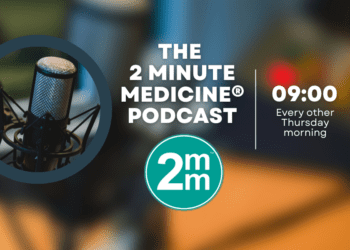CRISPR-mediated gene activation rescues obesity caused by haploinsufficiency [PreClinical]
1. Haploinsufficiency of Sim1 or Mc4r in the hypothalamus result in an obesity phenotype in mice and humans.
2. In mice, CRISPR-mediated activation (CRISPRa) of the promoter or enhancer regions of the Sim1 or Mc4r genes via adeno-associated viral (AAV) delivery resulted in rescue of the obesity phenotype.
Evidence Rating Level: 2 (Good)
Study Rundown: Haploinsufficiency is a term for loss-of-function mutations in one copy of a gene that results in reduced amounts of protein. It is estimated that 660 genes cause human disease due to haploinsufficiency. Genetic strategies to address this group of diseases include the packaging of transgenes in recombinant adeno-associated virus (rAAV) for delivery into the appropriate tissue to restore gene dosage. However, the adenovirus packaging constraint is ~4700 base pairs, which means that this strategy cannot be used for large genes. Furthermore, rAAV-mediated delivery of transgenes can result in problems due to ectopic expression (the expression of a gene in a cell or tissue type in which it is not normally expressed).
Matharu et al successfully apply a new CRISPR-based therapeutic option which circumvents AAV packaging limits and avoids the problems associated with ectopic expression. In mice and in humans, haploinsufficiency of Sim1 or Mc4r results in obesity. Matharu et al employed a CRISPR-activation system in which a nuclease-deficient Cas9 (dCas9) was fused to a transcriptional activator (V64) and directed to either the promoter or enhancer of Sim1 or Mc4r with a targeting guideRNA (gRNA). This construct was delivered by postnatal injection of CRISPRa-rAAV into the mouse hypothalamus. They observed that gene activation was highly specific to either locus, increased the expression of the normal copy of the gene, and rescued the obesity phenotype of heterozygous mice. In the case of Sim1, gene upregulation occurred only in tissues where the regulatory element (promoter or enhancer) that was being targeted was active. While promoter-CRISPRa-targeted mice upregulated Sim1 in all tissues which endogenously express Sim1, the enhancer-CRISPRa-targeted mice upregulated Sim1 specifically in the hypothalamus. This suggests that CRISPRa-based targeting approaches may not only avoid the problems associated with ectopic expression, but also confer tissue specificity in cases in which tissue-specific enhancers can be exploited. Clinical translation of CRISPRa-based gene therapy approaches will require evaluation of the off-target effects of targeting gRNAs in human cells and the mapping of the promoters and enhancers of genes to be targeted.
Click to read the study in Science
Relevant Reading: CRISPR gene therapy
In-Depth [pre-clinical study]: The objective of this study was to demonstrate the in vivo efficacy of a CRISPR-mediated activation approach for treating haploinsufficient disease. The authors used Sim1 (a basic helix-loop-helix transcription factor) and Mc4r (the melanocortin 4 receptor) heterozygous mice as their models; haploinsufficiency of either gene in the hypothalamus results in obesity. Both these genes have well-characterized promoters. In either case, short guide RNAs (sgRNAs) were screened in vitro in mouse neuroblastoma (Neuro-2a) cells using both transient transfection and rAAV injections; the gRNA that resulted in the most robust up-regulation was subsequently used for packaging into an adeno-associated virus for injection into the hypothalamus of heterozygous mice. The V64 activator domain was chosen because of its small size so that it could fit in the rAAV plasmid, and because it has moderate activation potential for a wide variety of genes, compared to other known activators. Additionally, upregulation of Sim1 in vivo by transgenic CRISPRa (cross of Sim1+/- mice with knock-in mice containing the dCas9-VP64 and targeting guide) was shown to rescue obesity in a manner similar to the rAAV injected heterozygous mice. CRISPRa upregulation was demonstrated to be confined to tissues in which Sim1 was expressed; in the case of the enhancer-targeting construct, Sim1 upregulation was specific to the hypothalamus. RNAseq and CHIPseq experiments were conducted to demonstrate that the targeting approach was highly specific. Targeting of the Mc4r promoter using a similar approach also resulted in rescue of the obesity phenotype.
Image: PD
©2019 2 Minute Medicine, Inc. All rights reserved. No works may be reproduced without expressed written consent from 2 Minute Medicine, Inc. Inquire about licensing here. No article should be construed as medical advice and is not intended as such by the authors or by 2 Minute Medicine, Inc.


![CRISPR-mediated gene activation rescues obesity caused by haploinsufficiency [PreClinical]](https://www.2minutemedicine.com/wp-content/uploads/2019/03/CRISPR-350x250.jpg)



